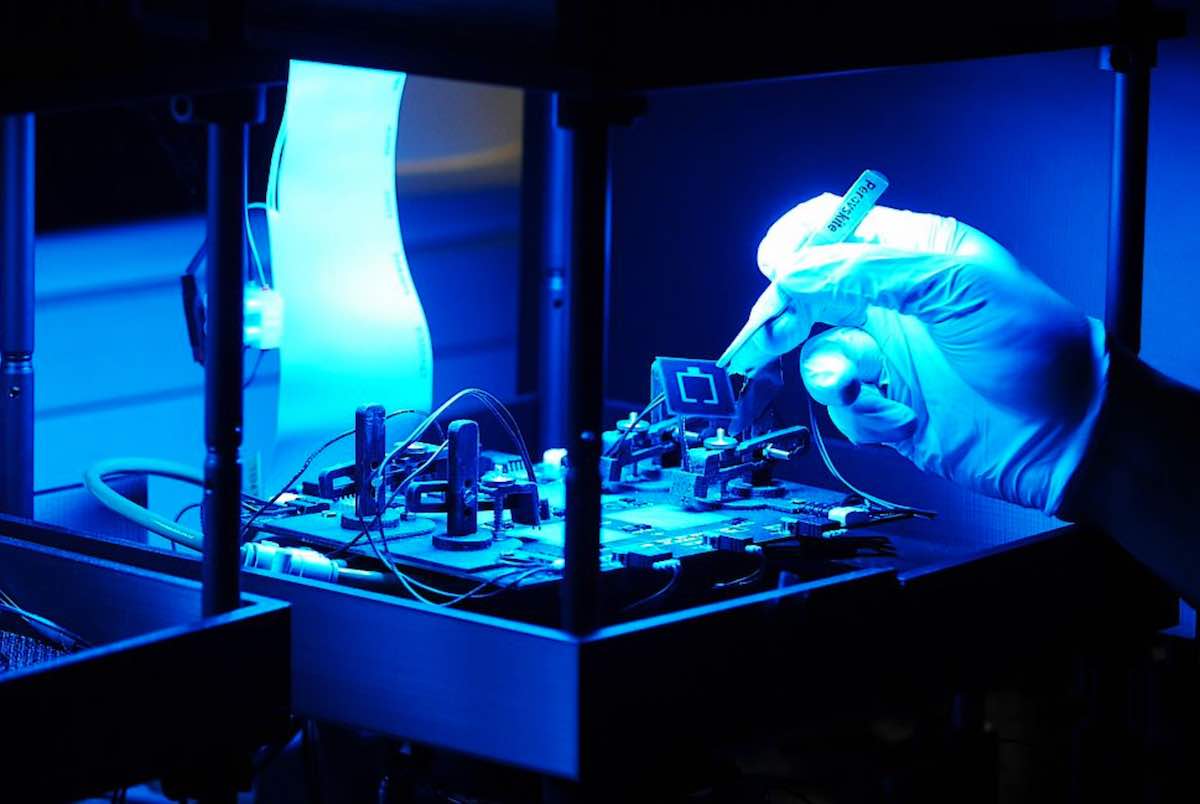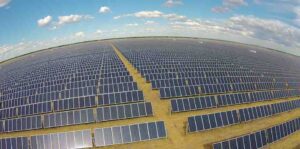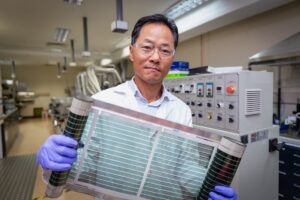South Korean solar manufacturer Hanwha Q Cells and German sustainable research centre Helmholtz-Zentrum Berlin have set a new world record of 28.7% for 2-terminal tandem solar cell efficiency.
The record follows three years of joint research in Germany by the two organisations, in an effort to create a tandem solar cell comprising of a silicon-based Q.ANTUM bottom cell and a perovskite-based top cell.
Achieving the new record efficiency of 28.7% is an improvement of one whole percentage point compared with the 2020 record value of 27.8%, which was independently verified by Fraunhofer ISE Callab.
This previous 2020 record was itself a slight increase on an efficiency record set by researchers at the Australian National University in March of 2020, who achieved a tandem cell efficiency using perovskite-silicon tandem technology.
The latest increase in tandem efficiency came about through an improvement in both the perovskite and the silicon sub cells.
Of particular importance, however, is that, while the solar research community has already produced higher perovskite-tandem cell efficiencies, these were achieved using lab technology that is not directly transferrable into the world of mass production.
Conversely, the new record set by Q Cells and Helmholtz-Zentrum Berlin (HZB) was achieved using an industry feasible and cost-efficient bottom cell structure based on the Q.ANTUM technology.
“Our experts have achieved several world records for tandem cells combining perovskite top cells with other bottom cells on a laboratory scale,” said Professor Dr. Bernd Rech, scientific director of HZB.
“We promote knowledge and technology transfer and welcome the fruitful collaboration with Q CELLS. It is remarkable how close the jointly achieved efficiency with a mass production ready bottom cell already comes to what we can reach at a lab scale.”
“Q Cells is excited to announce this joint new world-record in tandem cell efficiency together with Helmholtz-Zentrum Berlin,” said Dr. Daniel Jeong, CTO of Q CELLS.
“Both teams of researchers have collaborated closely to develop a tandem cell technology, which would be able to accelerate the commercialization process and, ultimately, deliver to the industry a genuine leap forward in photovoltaic performance.
“Q Cells is confident that it can once again shape the next generation of solar cells and will continue to invest heavily in supporting research and development in this field.”
The research and development was funded in part by the German Federal Ministry for Economic Affairs and Climate Action (BMWK) and the state of Saxony-Anhalt.
The record achieved by the Q Cells and HZB researchers also falls in line with Q Cells’ larger goal to boost its research and development investment in Germany to €125 million over the next three years – with the lion’s share of that figure earmarked for the continuous support of Q Cells R&D department on the commercialisation of perovskite-silicon tandem technology.
HZB’s participation follows on from a number of record efficiency achievements set in lab settings. In November 2021, three HZB teams led by Professors Christiane Becker, Bernd Stannowski, and Steve Albrecht managed to increase the efficiency of completely in-house manufactured perovskite silicon tandem solar cells to a new record value of 29.80% increase.










